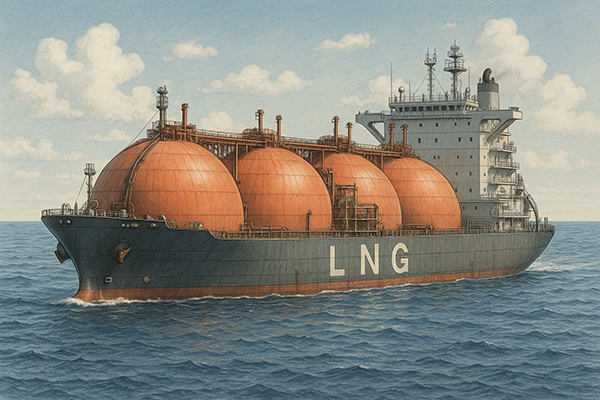Large LNG Carrier Ship: The Hottest Commodity in the Newbuilding Market?
The global liquefied natural gas (LNG) market is experiencing rapid change, fueled by a surge in demand for LNG carrier ships. Shell projects that worldwide LNG demand could rise by about 60% by 2040, reaching as much as 718 million metric tons annually, with Asia and Europe leading this growth (source). Europe’s urgent need to replace Russian pipeline gas has also driven a 21.6% increase in LNG imports in the first half of 2025 (source). As a cleaner transitional fuel, LNG and its carrier sector are attracting significant policy focus and investment.

Advantages of Large LNG Carrier Ships
Large LNG carrier ships, such as the QC-Max class ordered by Qatar, can transport up to 271,000 cubic meters of LNG, making them the largest vessels in this category (source). Their vast capacity brings economies of scale, reducing per-unit shipping costs—especially important for long-distance, intercontinental LNG trade. Many new vessels also feature dual-fuel engines, enabling operation on both heavy fuel oil and LNG. This reduces emissions and fuel consumption, helping the shipping industry move closer to its sustainability goals (source).
What’s Driving Demand?
Several factors are behind the robust demand for new LNG carrier ships. Major export projects, such as Qatar’s North Field expansion and new developments in the US and Australia, are set to increase global LNG exports (source). Geopolitical shifts—particularly the Russia-Ukraine conflict—have accelerated Europe’s pivot to LNG, increasing the need for efficient transportation solutions. The expansion of regasification terminals and import facilities worldwide, along with the growing use of LNG as marine fuel, further boosts demand for modern, versatile ships.
Key Orders and Market Trends
Reflecting these trends, QatarEnergy has placed major orders for six ultra-large LNG carrier ships from Chinese shipyards, expanding its newbuild fleet to 128 vessels (source). In 2024, the company also finalized charters for nineteen 174,000-cubic-meter ships with Korean yards, boosting its operated fleet to 104 vessels (source). Other shipping companies, such as Wah Kwong in Hong Kong, are similarly expanding their fleets, betting on continued trade growth and long-term supply contracts (source).
Shipbuilding Capacity and Quality Issues
With Korean shipyards nearing full capacity, more orders are shifting to Chinese builders, who offer a cost advantage (source). However, concerns about quality control and delivery schedules remain, leading international shipping companies to strengthen oversight (source). The global LNG carrier ship fleet is expected to expand significantly by 2029, though shipyard bottlenecks and long lead times persist as industry challenges.
Risks and Market Challenges
A sharp increase in new ship deliveries has led to some overcapacity, pushing down spot rates. In November 2024, daily charter rates for Atlantic LNG carrier ships dropped to around $19,700, down 80% year-on-year (source). Delays in US projects and full European storage add complexity to the market. Additionally, while LNG is cleaner than coal, it still releases CO₂ and methane during combustion (source). The high cost of building a large LNG carrier ship and the reliance on long-term contracts add to the sector’s risks and uncertainties.
Future Outlook for LNG Carrier Ships
Despite these short-term pressures, the long-term prospects for LNG carrier ships remain strong. Shell forecasts global LNG demand will hit between 630 and 718 million tons per year by 2040 (source), with the US and Qatar together expected to provide around 60% of the world’s supply by 2035. As climate goals and energy strategies push for cleaner technologies and modernized fleets, LNG is likely to remain a vital part of the global energy transition.
Conclusion
With their operational efficiency and ability to meet growing global demand, large LNG carrier ships are establishing themselves as the backbone of the newbuilding market. Shipowners and investors, however, must continue to monitor market volatility, regulatory changes, and technological innovations to stay competitive.
For more information about available LNG carriers, newbuildings, or second-hand ships, you can visit OICT Ship.
References
Shell expects 60% rise in global LNG demand by 2040 as Asia leads growth
Europe drives LNG import growth as Asia stumbles on higher price
QatarEnergy orders six more LNG vessels from China State Shipbuilding
Hong Kong's Wah Kwong orders more LNG carriers banking on growing trade
LNG freight rates plummet as sector grapples with glut of ships
Chinese shipyards face quality control concerns over LNG vessels

